Sourdough Pretzel Rolls
You’ll love these Sourdough Pretzel Rolls. A generous helping of sourdough starter gives these rolls a slightly sweet and complex flavor to compliment the extra dark, distinctively “pretzely” crust. Learn a trick for the best pretzel flavor.
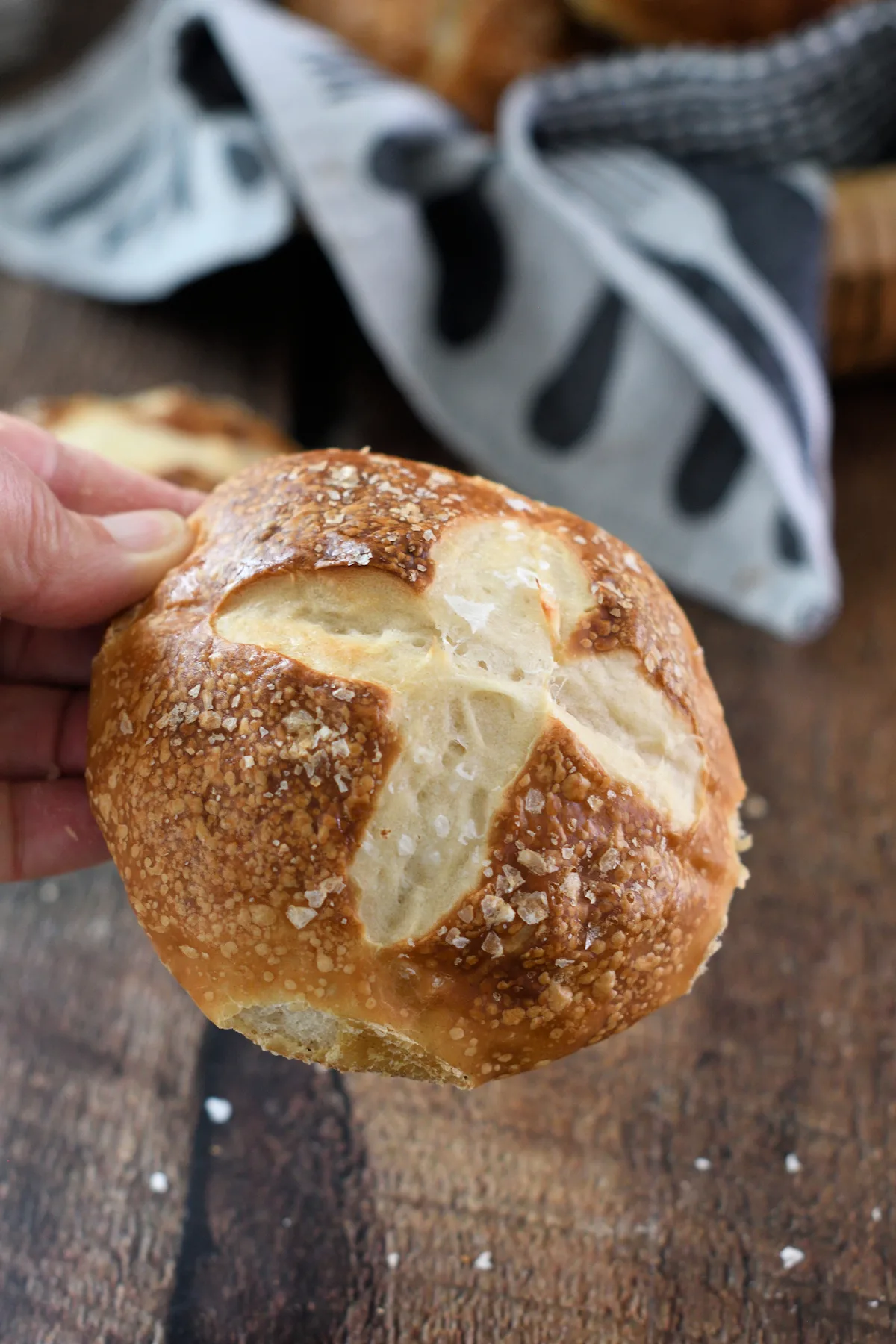
I’m a big fan of pretzels in all forms. I love the pleasantly-bitter flavor of a good pretzel crust.
What is it exactly that makes the crust taste like a pretzel? The rolls are dipped in an alkaline liquid before baking. Commercially and traditionally the alkaline used might be lye. But, being that lye is quite caustic, most home bakers turn to baking soda to create the pretzel dip.
Baking the baking soda makes it more alkaline, which gives our Sourdough Pretzel Rolls a deeper color and more of the “pretzely” flavor.
By the way, if you don’t have a sourdough starter yet you can make Malt & Rye Pretzel Rolls with commercial yeast.
Scroll through the process photos to see how to make Sourdough Pretzel Rolls:
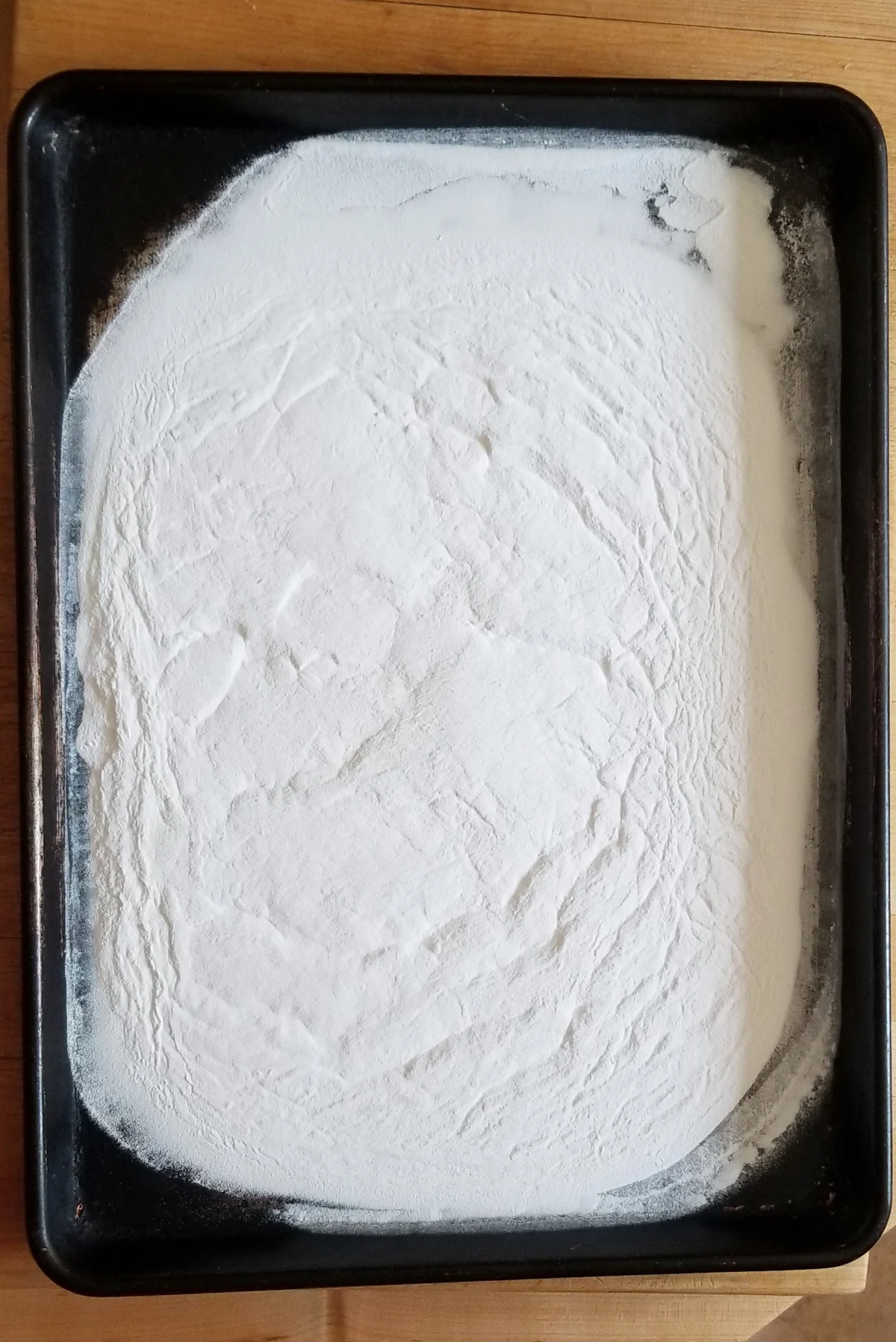
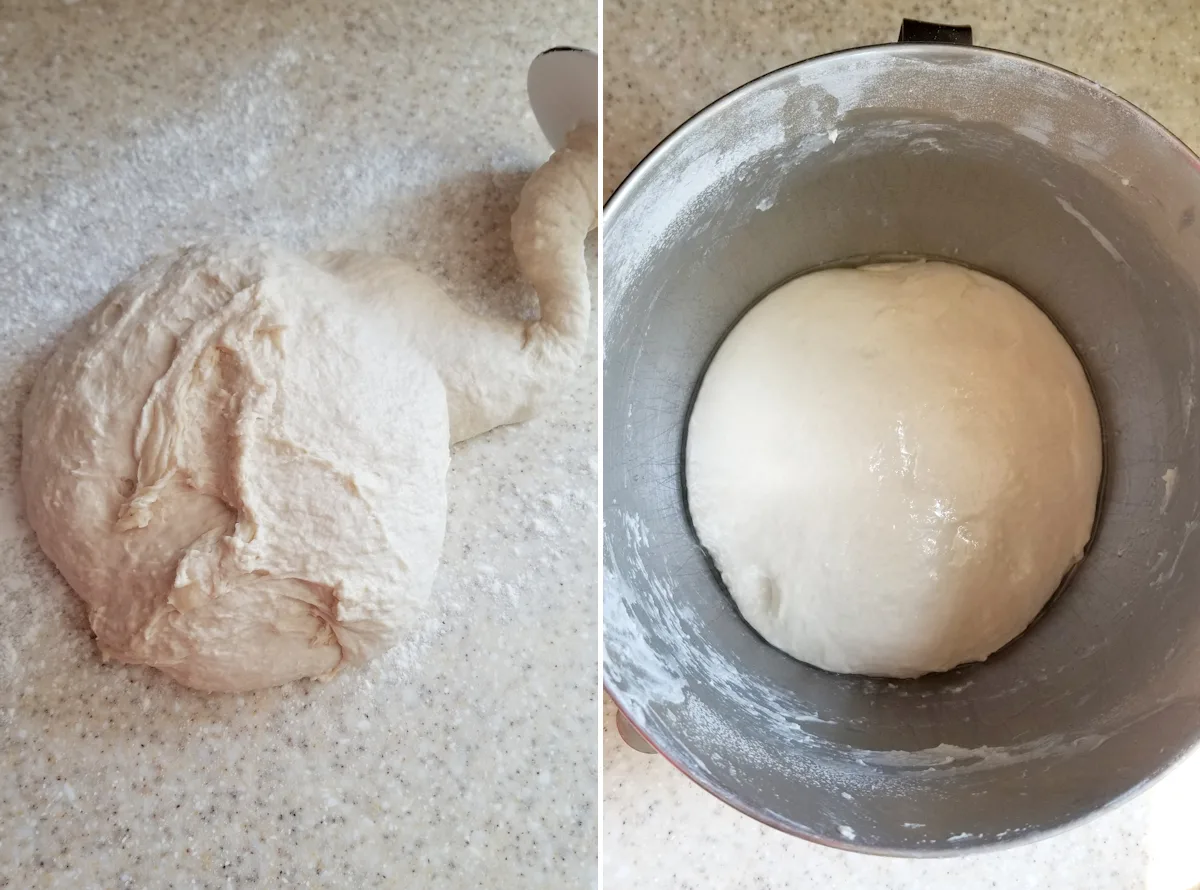
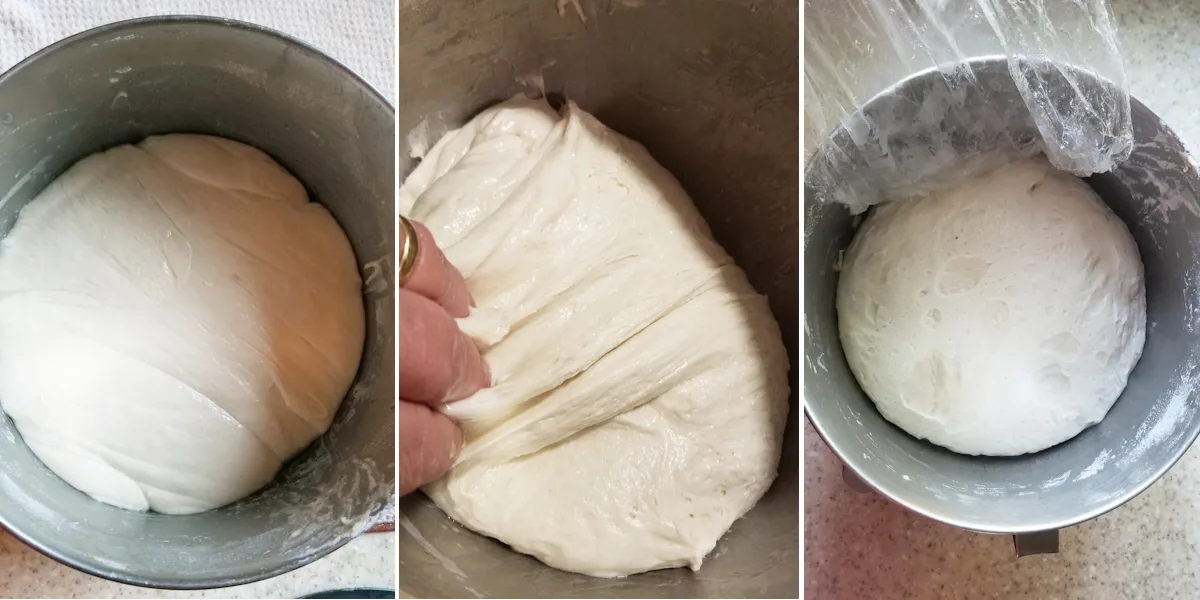
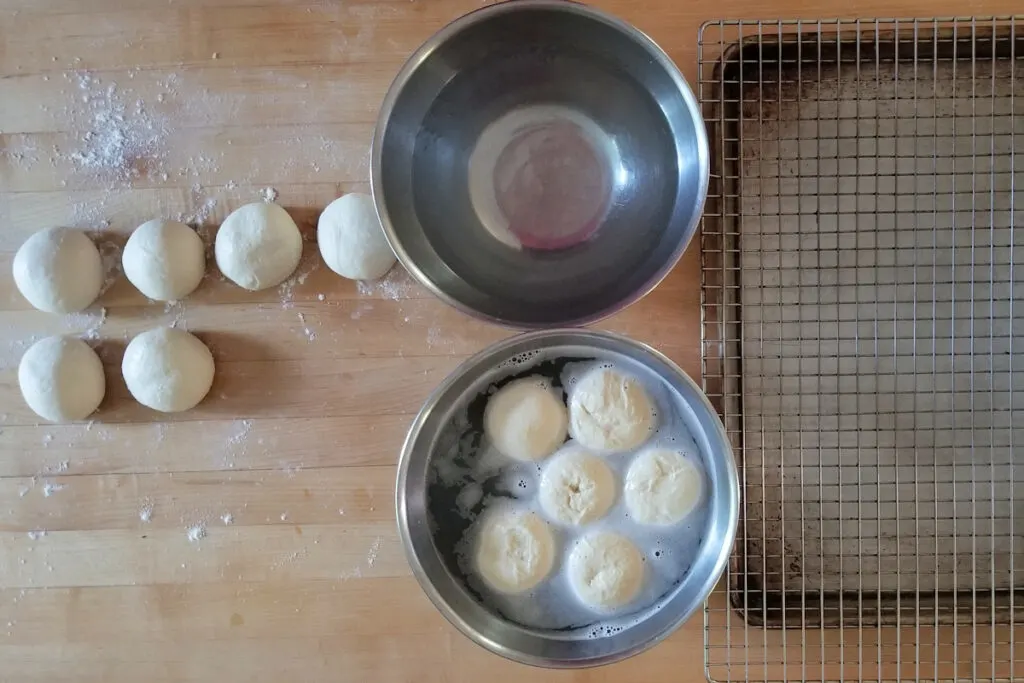
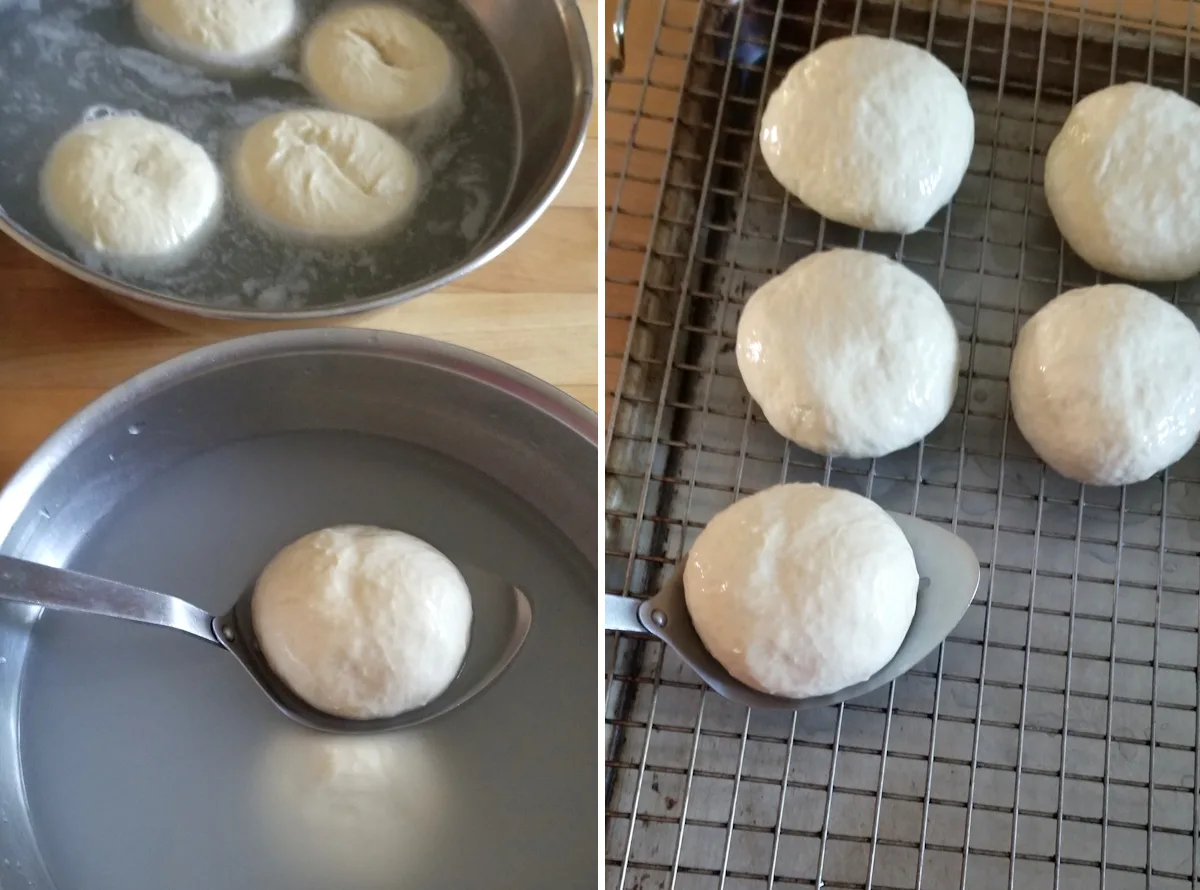
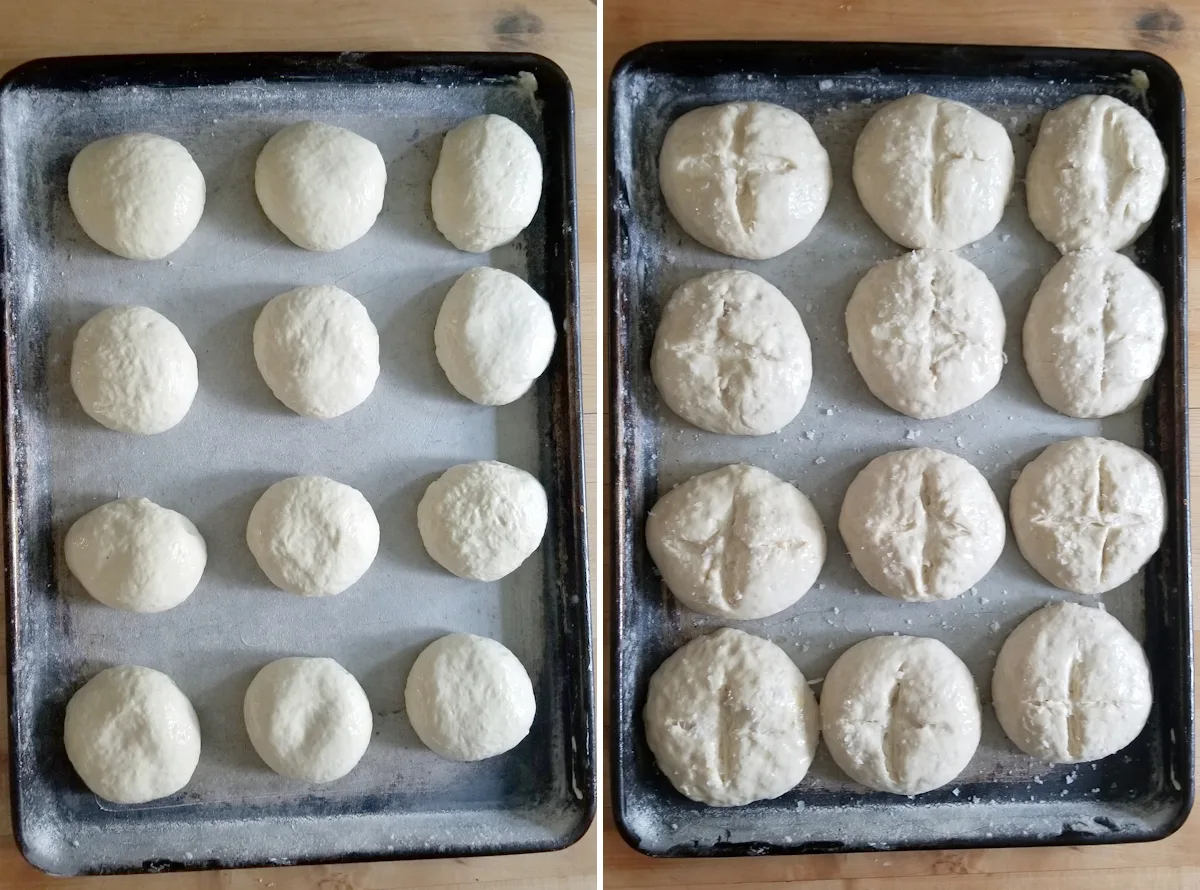
A timeline for making Sourdough Pretzels Rolls:
- If your starter needs feeding, do that the night before or early in the morning of the day you want to make the dough.
- If you want to make dough the same day that you will bake, mix the dough first thing in the morning. This means your starter should be fed the night before. Allow the dough to ferment at room temperature during the day. By later in the afternoon the rolls should be ready to shape, dip and bake and will be fresh for dinner.
- If you want to make the dough the day before baking, mix the dough in the afternoon. Allow it to ferment at room temperature during the day. Refrigerate the dough in the evening before going to bed.
- The dough can stay in the refrigerator for up to 2 days at this point.
- Take the dough out in the morning, shape the rolls, dip them into the baking soda bath and set them aside to rise. The rise will take longer since the dough is cold.
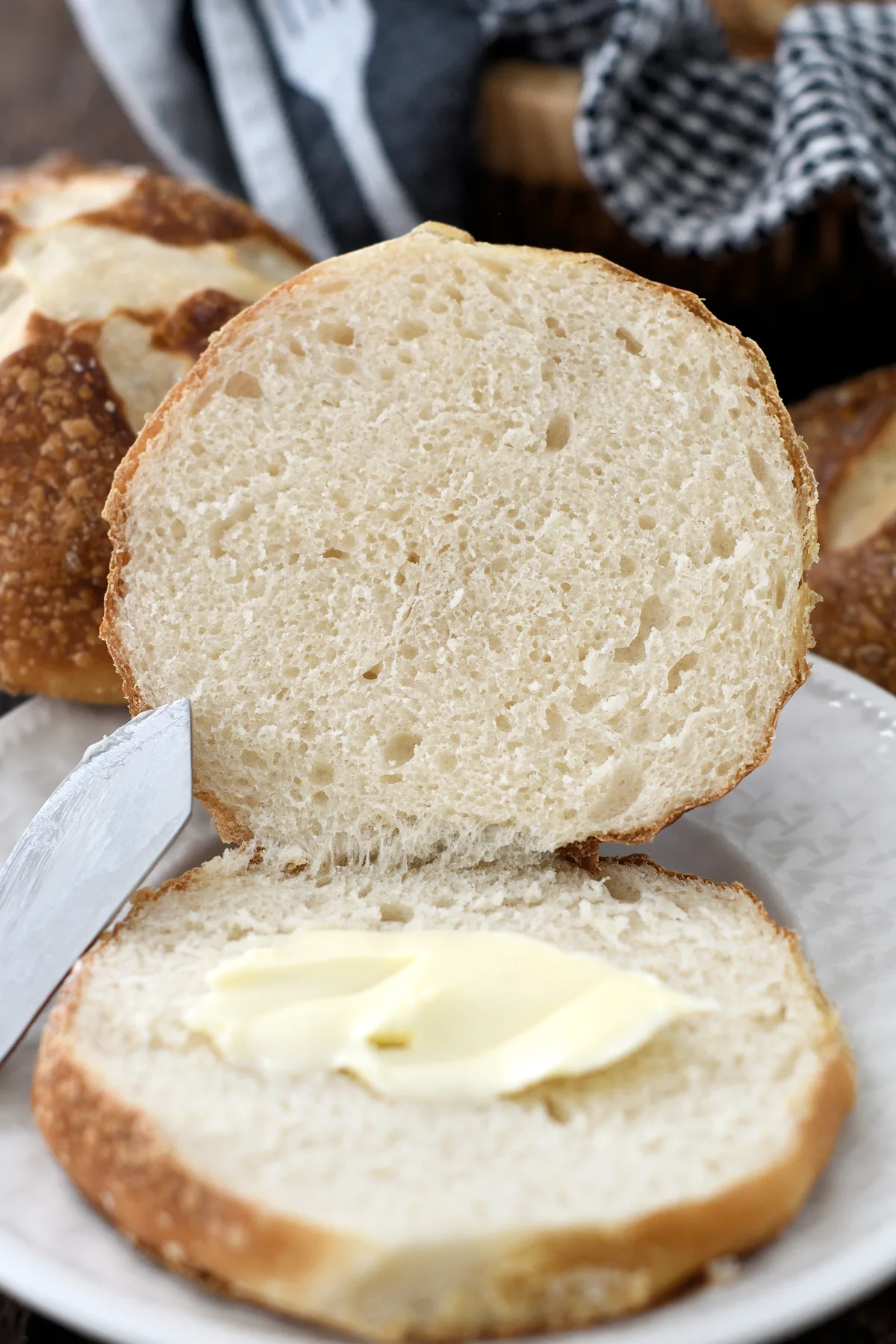
If you love this recipe as much as I do, I’d really appreciate a star rating and a quick comment. Ratings and comments help my recipes show in search results. Thanks!
Sourdough Pretzel Rolls
Ingredients
“Baked” Baking Soda
- 12 oz baking soda (1 ⅓ cups)
Dough
- 8 oz active sourdough starter (1 cup)
- 10 oz warm water (1 ¼ cups)
- 20 oz bread flour (4 cups, see note)
- 2 oz butter (melted)
- ¾ oz Honey (1 tablespoon)
- 2 teaspoons table salt
- 1 egg white
- Kosher or Sea Salt for finishing
Instructions
- Preheat the oven to 300 °F. Sprinkle the baking soda onto a baking sheet lined with aluminum foil or use disposable aluminum pan. Bake for 1 hour. Set aside while you make the dough. (see note)
- Combine 8 oz active sourdough starter, 10 oz warm water and and half of the bread flour in a mixing bowl. Mix to form a thick batter. Cover the bowl and set it aside for 30 minutes.
- If using a stand mixer, switch to the dough hook. Add 2 oz butter (melted), ¾ oz Honey, 2 teaspoons table salt and remaining bread flour and mix until the dough gathers on the hook and clears the sides of the bowl. If the dough is very sticky and doesn't clear the sides of the bowl, sprinkle in a few more tablespoons of flour. If mixing by hand, add as much flour as you can then turn the dough out and knead in the rest of the flour. Knead the dough for 5 minutes.
- Turn the dough out onto a floured surface, form it into a smooth ball and place it in a lightly oiled bowl. Turn the dough once to coat it on all sides. Cover and set aside in a warm spot.
- After 60 minutes uncover the bowl, lift one side of the dough and fold it into the middle of the dough. Repeat with the other three sides of the dough then flip the dough over. You're basically turning the dough inside-out to redistribute the yeast and strengthen the gluten. Cover the bowl and after 60 minutes repeat the procedure again.
- Cover the bowl and after 60 minutes fold the dough one more time. By now the dough should be lively, elastic and airy. If the dough is still sluggish give it another hour or two at room temperature.
- If you want to finish making the rolls the next day return the dough to the bowl, cover tightly and refrigerate overnight. The next morning continue with shaping. Otherwise continue shaping the same day.
- Turn the dough out onto a lightly floured surface. Divide the dough into 12 pieces. Use your cupped hand to roll each piece into a smooth ball. Line the rolls up on the work surface and let them rest for 10 minutes.
- Butter and flour a half sheet pan. In a large bowl combine the "baked" baking soda with a quart of warm water. Fill another bowl with plain water. Set a cooling rack over a sheet pan next to the bowls.
- Reshape and tighten each roll as you put it into the bowl of baking soda water. Add as many rolls as fits into the bowl. Let them sit in the water for 2 minutes. Transfer the rolls to the bowl of clean water to rinse, then set them onto the cooling rack to drain. Continue until all the rolls have been dipped. Transfer the rolls from the rack to the prepared baking sheet.
- Set the tray aside, uncovered, for 1 – 1 1/2 hours until the rolls are almost doubled in size. The surface of the rolls may look lumpy but they will smooth out during the baking. The time will vary depending on the temperature of the dough. Preheat the oven to 425 °F.
- Use a sharp knife or razor to cut an "X" in the top of each roll. Brush each roll with egg white and sprinkle with kosher salt or coarse sea salt.
- Bake until dark brown, about 20 minutes.
Would you like to save this recipe?
As an Amazon Associate and member of other affiliate programs, I earn from qualifying purchases.



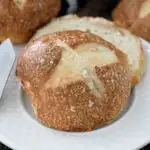





I am planning on making the sourdough pretzel buns this weekend. I’ve never made any and was wondering why you dip buns in water instead of boiling in water like most other recipes.
thank you for great recipes
It’s easier than using boiling water and works just as well. Dipping the buns in the extra strong baking soda water makes a gel-like layer from the starch on the surface of the bun. Using extra strong baking soda mixed with warm water is sufficient to cause that gelation. The alkaline baking soda also gives them pretzels the characteristic “pretzel” flavor for crust.
Just made these. My first sourdough recipe and it was amazing!!! Kids LOVED them also (and loved helping me with bathing the dough, drying, shaping, etc!) Thank you
These were excellent! I fed my starter three times after I took it out of the fridge and it was real bubbly. I got such a light fluffy dough! I didn’t add flour when I had it in the mixer even though the dough wasn’t clearing the sides of the bowl and was still a little sticky. But it worked out well with the folds! I made 10 rolls instead of 12 so I can use them as burger buns. I’ve used baked baking soda before to make pretzels but I was short and I subbed part baking powder (the first ingredient was starch then baking soda). Would not suggest subbing! Unlike the baking soda the baking powder burnt in the oven. I ended up making the bath and tasting it and still using it and it did give me the golden pretzel color but next time will definitely stick to baking soda! Thank you for a wonderful recipe! Can’t wait to try them tomorrow as burger buns!
Made these today, and they turned out great. I made the dough yesterday then put in the fridge (step 7). I sprinkled everything bagel seasoning on a few of them. This recipe is now added to my short list of to do recipes ( like your Biscotti & carrot cake recipe).
“Baked” Baking Soda
1 1/3 cups (12 oz, 340g) baking soda???
This is not something we have come across in England. Please explain.
If you click on the link in the post for the text “Baking the baking soda” you can read an article about the soda.
Hi Eileen,
Your baking soda link didn’t work. I found this link
https://www.nytimes.com/2010/09/15/dining/15curious.html
Thank you for all your wonderful recipes! I have my rolls rising as I write this. Will rate it when they are cooked
Thanks, I fixed the link.
@MRS ANNE WATTS, I too am English. I am presuming that baking soda is our bicarbonate of soda. I am wondering if the measurement of 100g of baked baking soda is the weight after the soda has been baked and then to add it to 2 cups of water? l like the look of the rolls, so will just have to try them and see.
Yes, bicarbonate of soda is the same as baking soda. The purpose of “baking” the soda is to intensify the alkaline property. If you read the article that I linked to in the fourth paragraph you can read about the science behind it. The weights of the baking soda and water are exactly as written. I’m not sure where you’re getting the 100g measurement for the soda and the 2 cups of water from. Bake 12oz (340g) of baking soda (bicarbonate of soda). Mix that with a quart (a liter) of water to dip the rolls. You can bake half the amount of soda and mix with half as much water, but then you’ll have a very small bowl to dip the rolls and will have to do them just 1 or two at a time.
@MRS ANNE WATTS,